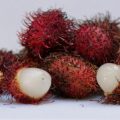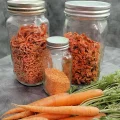Bay leaves are an essential ingredient in many culinary dishes around the world. These aromatic and flavorful leaves come from the evergreen laurel tree, native to the Mediterranean region. The scientific name for bay leaf is laurus nobilis, but it also goes by a few other names, including sweet bay and laurel leaf.
Bay leaves are a common ingredient in soups, stews, and even some sauces. They are also used to flavor meat dishes such as roasts and braises. Bay leaves have a slightly bitter taste that mellows out when cooked for long periods of time. When used in the riht amounts, bay leaves can add complexity and depth to your dishes.
The leaves can be used fresh or dried. Fresh bay leaves should be added near the end of cooking so that their flavor is not lost durng the cooking process. Dried bay leaves should be added at the beginning of cooking so they can release their flavor into the dish while it cooks. It’s important to note that you should remove any whole bay leaves before serving your dish as they are very tough and chewy if eaten directly!
Bay leaves have been used throughout history for medicinal purposes as well as culinary uses. They contain compounds that have anti-inflammatory properties which can help reduce pain associated with arthritis and other joint issues. Bay leaves also contain antioxidants which can help improve overall health by reducing oxidative stress in the body caused by free radicals from environmental toxins or unhealthy diets.
In addition to being a tasty herb, bay leaves make an excellent decoration for your kitchen or dining table! Place them in a decorative bowl or jar on your countertop or hang them on a wall for a unique touch of greenery in your home’s decor scheme.
Bay leaves truly have something to offer everyone – from cooks to decorators alike! Whether you use them fresh or dried, adding these fragrant herbs will add an extra layer of flavor and texture to any dish you create!
What Type of Tree Produces Bay Leaves?
Bay leaves are sourced from the tree Laurus nobilis, a native of the Mediterranean region. This species of evergreen tree is also knon as the “bay laurel” or “sweet bay” and has been used in cooking since ancient times. The leaves are harvested when they reach full maturity and dried for use in cooking. They have a strong, aromatic scent and flavor which makes them an excellent addition to a variety of dishes. Bay leaves can be used fresh or dried, whole or ground, but should always be removed before eating as they can be quite bitter if consumed.
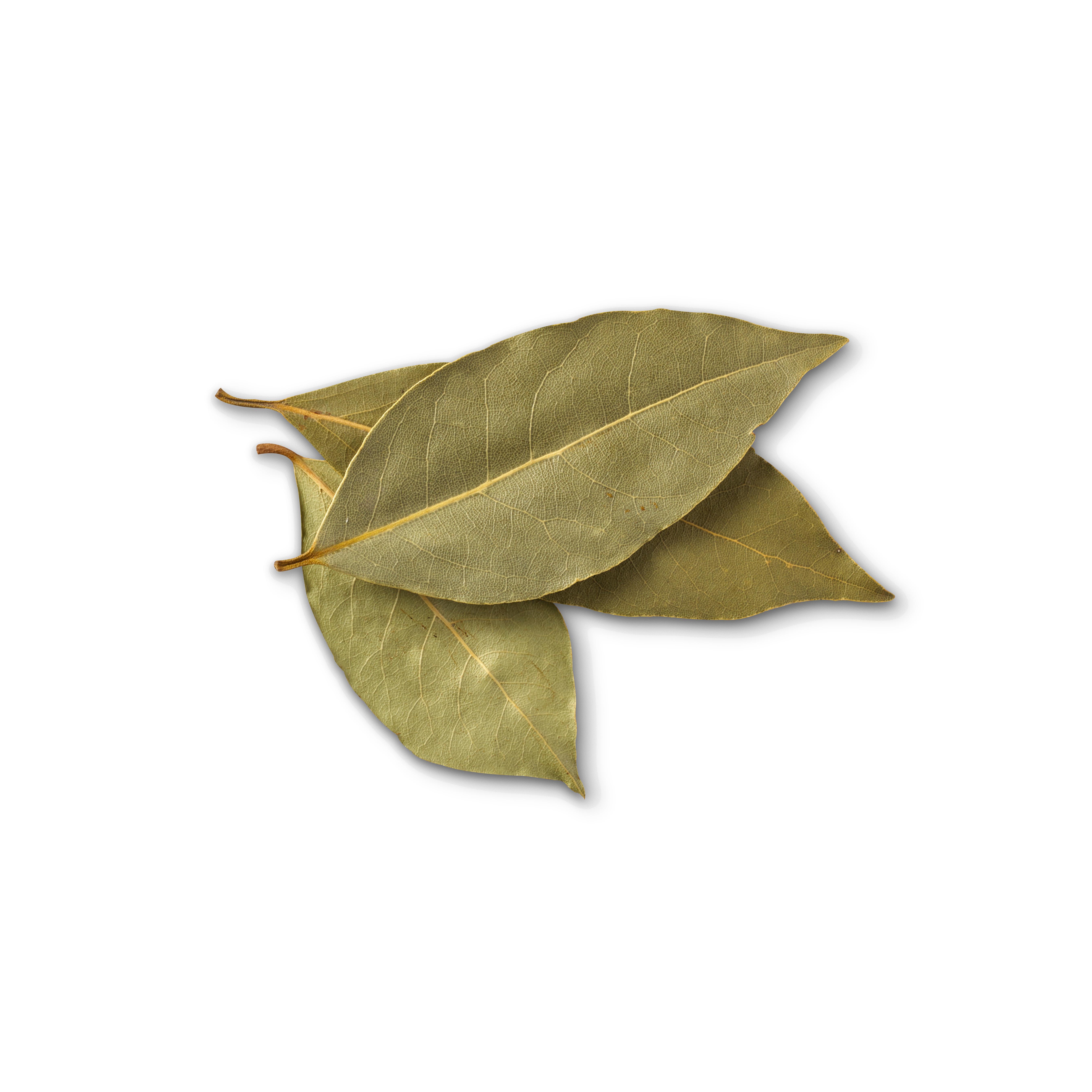
Source: karlsburger.com
Do Bay Leaves Come From Bay Laurel Trees?
Yes, bay leaves come from bay laurel trees (Laurus nobilis) which are part of the Lauraceae family. Bay laurel trees are an evergreen shrub or small tree with fragrant, dark green leaves which can be used fresh or dried in cooking for their distinctive flavour and fragrance. Bay laurel is native to the Mediterranean region but is now cultivated worldwide. The leaves can be harvested throughout the year and should be used fresh and young for maximum flavor.
Where Bay Leaf Trees Grow
Bay leaf trees are native to humid climates of the Mediterranean region and can be grown in USDA hardiness zones 8-10. These trees prefer warm temperatures and do best when planted in late spring or early summer when there is no risk of frost. Bay leaf trees thrive in warm, moist, well-drained soil and need protection from cold winter winds. They require plenty of sunlight and regular watering to keep ther foliage lush and healthy. With proper care and attention, bay leaf trees will produce a bounty of delicious bay leaves that can be used to flavor dishes or as an essential oil for aromatherapy.
The Origin of Bay Leaf
Bay leaf coes from a tree, specifically the sweet bay leaf tree (Laurus nobilis). This evergreen tree is native to the Mediterranean region and grows up to 40-50 feet (12-15 m.) tall. It has small, oval-shaped leaves that are used for seasoning, and historically it was even made into a wreath to crown the winners of ancient Greek games.
Growing Bay Leaf From a Cutting
Yes, you can grow bay leaf from a cutting. To do this, cut a 6-inch (15 cm.) length from the end of a stem and remove all but the top couple leaves. Dip the end in rooting hormone if desired, then stick the cutting in a pot of good growing medium. Be sure to keep the cutting moist and out of direct sunlight. With proper care and patience, your bay tree sould grow new roots and be able to thrive on its own.
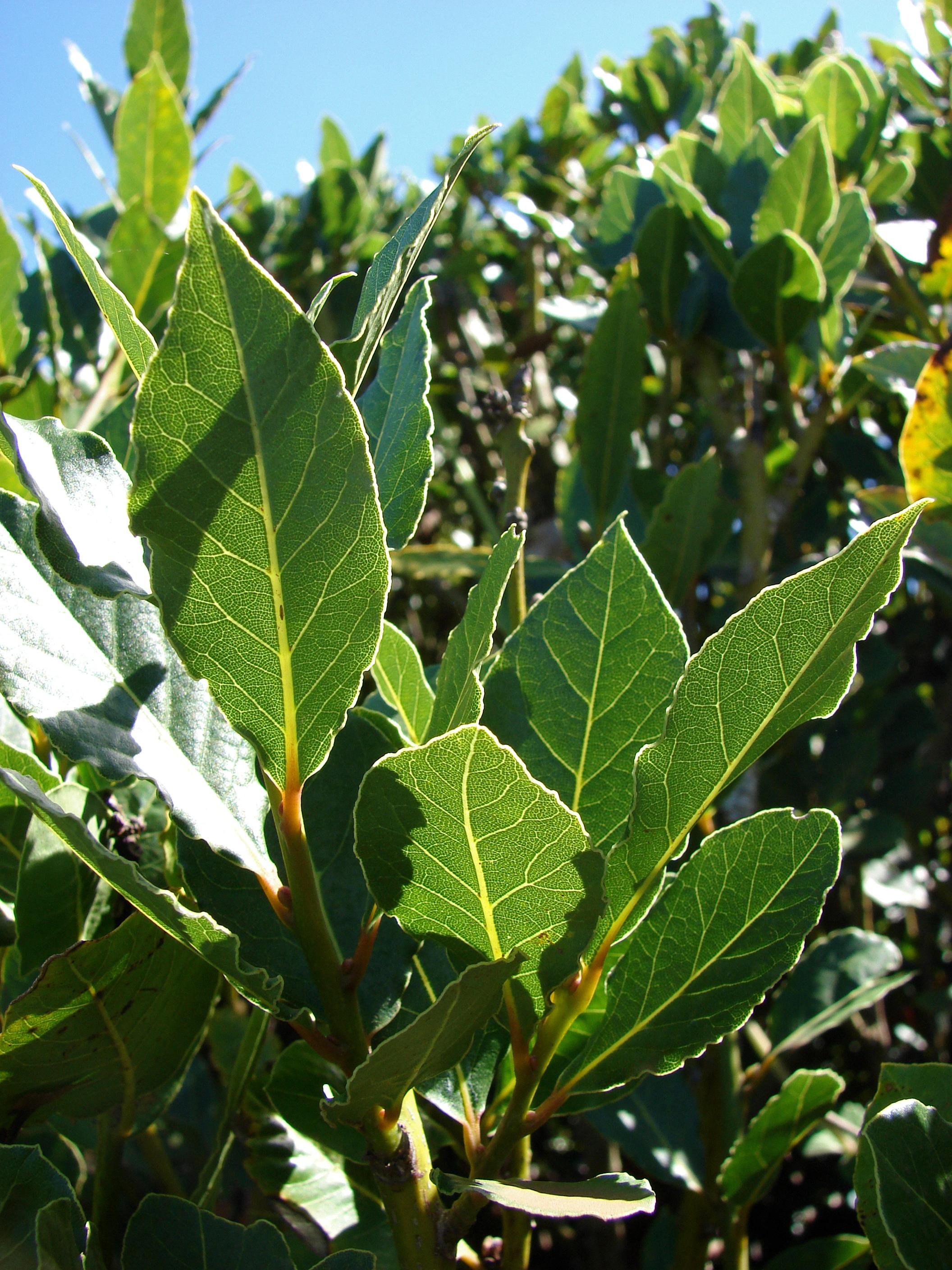
Source: en.wikipedia.org
Do Bay Leaves Grow in the United States?
Yes, bay leaves grow in the United States. Bay Laurel (Laurus nobilis) is an evergreen shrub or small tree that is native to the Mediterranean region. In the United States, it can be grown outdoors in hardiness zones 7-10, where temperatures don’t drop below 0 degrees Fahrenheit. In colder areas, bay leaf plants can be grown indoors as houseplants or in containers and brought inside during winter months. Bay leaves are also tolerant of a wide range of soil types and conditions, making them an easy choice for gardeners throughout the country.
The Origin of Bay Leaf
Bay leaves were first found in Asia, specifically in areas stretching from India to the Mediterranean. This is where the bay tree, also known as the laurel tree, originated. The plant spread quickly throughout the region due to its usefulness in cooking and medicinal remedies. It was also associated with honor and glory, which led to its use in the creation of laurel wreathes popularly associated with Ancient Greece and Rome.
Are Bay Leaves Derived from Cinnamon Trees?
No, bay leaf is not from a cinnamon tree. The leaves of the bay laurel tree (Laurus nobilis) are commonly referred to as bay leaves, and they have a distinctively sweet and earthy flavor. The leaves of the cinnamon tree (Cinnamomum tamala or C. zeylanicum) are often called tejpat or cinnamon leaves, and they have a distinctly clove-like and slightly spicy flavor. Bay leaves and cinnamon leaves are used for diferent culinary purposes, so it is important to know which one you need for your recipe.
The Origin of the Best Bay Leaves
The best bay leaves come from the Mediterranean region, specifically South Turkey, Portugal and Spain. The Mediterranean climate provides perfect growing conditions for the California bay tree (Umbellularia californica). The leaves of this species are of high quality, with a strong aroma and minty flavor. They are highly sought after by cooks around the world for their unique flavor and ability to add depth to dishes.
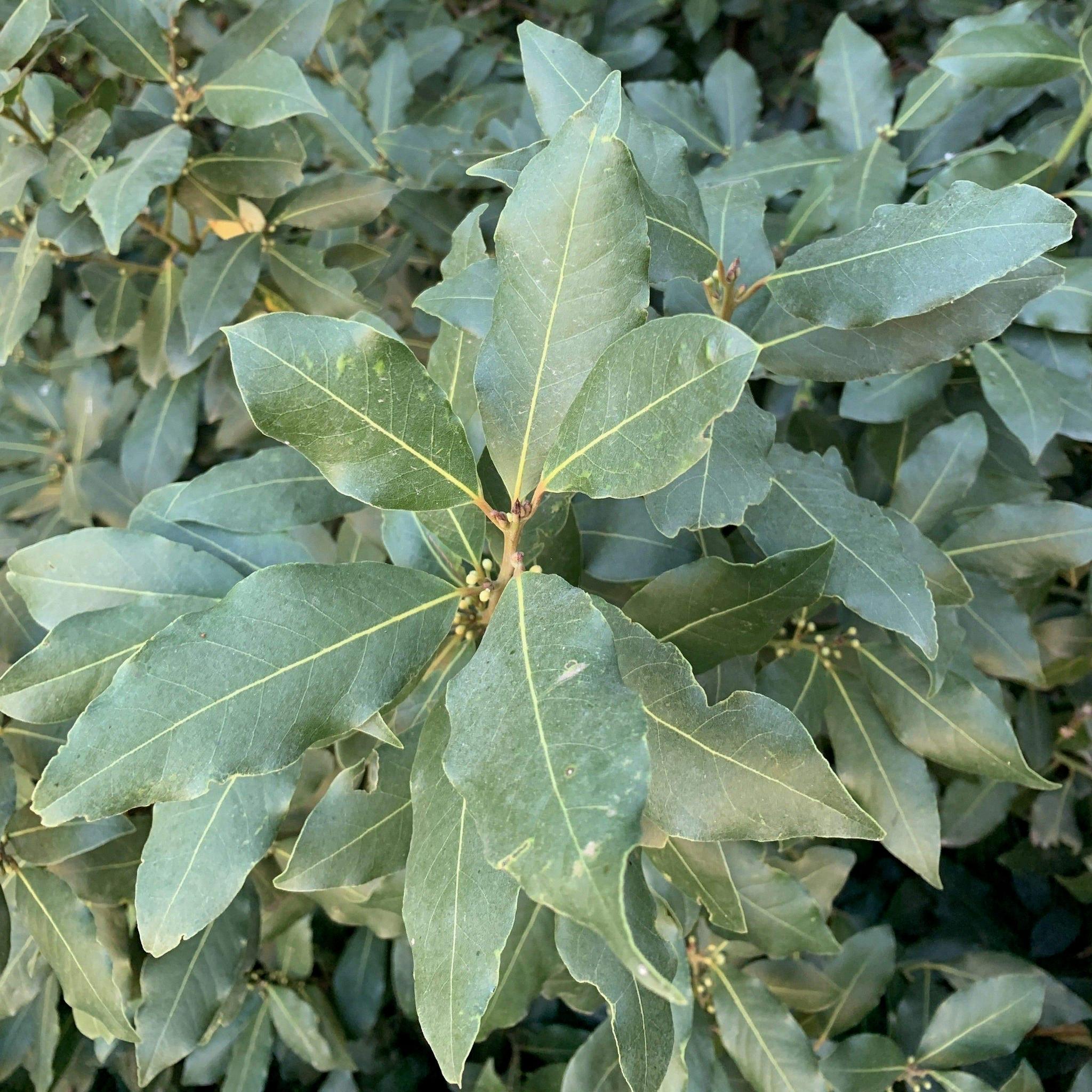
Source: burlapandbarrel.com
The Health Benefits of Bay Leaves
Yes, bay leaves are good for your health. They are an excellent source of essential vitamins, including vitamin A, vitamin B6, and vitamin C, which all contribute to a healthy immune system. Drinking bay leaf tea can help treat upset stomachs and provide relief from sinus pressure or congestion. In addition to these benefits, the tea is also very aromatic and can help enhance the flavor of dishes.
Are Bay Leaves Edible?
No, you cannot eat bay leaves in their whole form. Bay leaves, also known as bay laurel or sweet laurel, are a common ingredient in soups, stews, or braised meats. However, if you leave the whole leaves or leaf pieces in the dish, they should be removed before eating since they can be a choking hazard. The flavor of the bay leaves will stll remain in the dish if you remove them before serving.
The Effects of Feeding Dogs Food Cooked With Bay Leaves
No, dogs should not eat food cooked with bay leaves, as they are toxic for dogs. Bay leaves contain eugenol and other essential oils that can be poisonous to dogs if ingested. If you have cooked a meal containing bay leaves, it is best to make sure that the bay leaves have been removed prior to feeding it to your dog.
Are Bay Trees Edible?
No, not all bay trees are edible. While Laurus nobilis, or true bay laurel, is safe to consume, other members of the Lauraceae family such as California bay (Umbellularia californica) and redbay (Persea borbonia) are toxic and should not be eaten. Additionally, bayberry (Myrica cerifera), which is also a member of the Lauraceae family, is not edible and may cause skin irritation if touched. As a general rule of thumb, only true bay laurel leaves should be consumed as they are the only known species that is safe to eat.
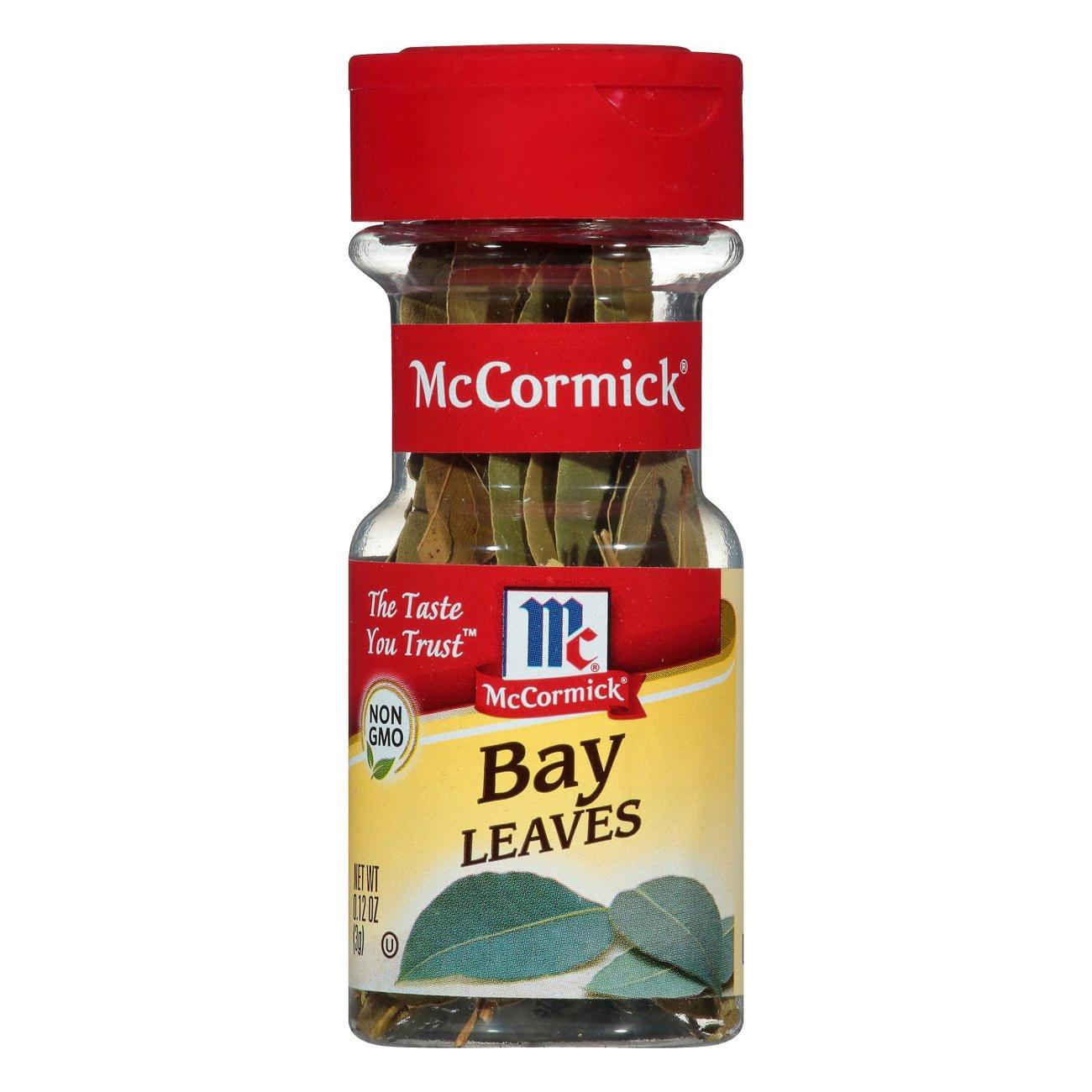
Source: heb.com
Using Bay Leaves From a Bay Tree
Yes, you can absolutely use the bay leaves from your bay tree. The fresh bay leaves will have a more intense flavor than their dried counterparts, so it’s best to harvest and dry them before usng them in cooking. To do this, simply pluck the leaves off the branch and place them on a baking tray lined with parchment paper. Bake in an oven set to 150°F (65°C) for 1-2 hours until they are completely dry. Once cooled, store them in an airtight container away from direct sunlight. You can now use these dried leaves in your recipes as desired!
Growing a Bay Tree
To grow a bay tree (Laurus nobilis), choose a spot in full sun with well-drained soil and ideally near a south- or west-facing wall. This will provide some shelter from cold winds and frost, particularly in cooler regions. For additional protection from the elements, consider planting your bay tree in a pot which you can move indoors in autumn. Ensure the soil is kept moist but not waterlogged. Feed your bay tree with a balanced fertilizer once every two weeks during its growing season, and prune it regularly in spring to prevent it from becoming too leggy.
Growth Rate of Bay Trees
Bay trees, also known as bay laurels, are slow-growing trees that typically grow a few inches in height per year. They are best planted in the spring, and when mature can reach heights of 10 to 60 feet. While their leaves have culinary uses, they should be kept away from cats, dogs and horses as the leaves are toxic to them.
Maximum Height of Bay Trees
Bay trees, or Laurus nobilis, can grow up to a huge 30 meters in their native environment. However, when cultivated they tend to remain small or can be shaped into a shrub-like form. Depending on the conditions and environment in wich it is grown, its size can vary significantly. Bay trees do best in areas with Mediterranean or Oceanic climates and require full sun or part shade, as well as well-drained soil in order to thrive.
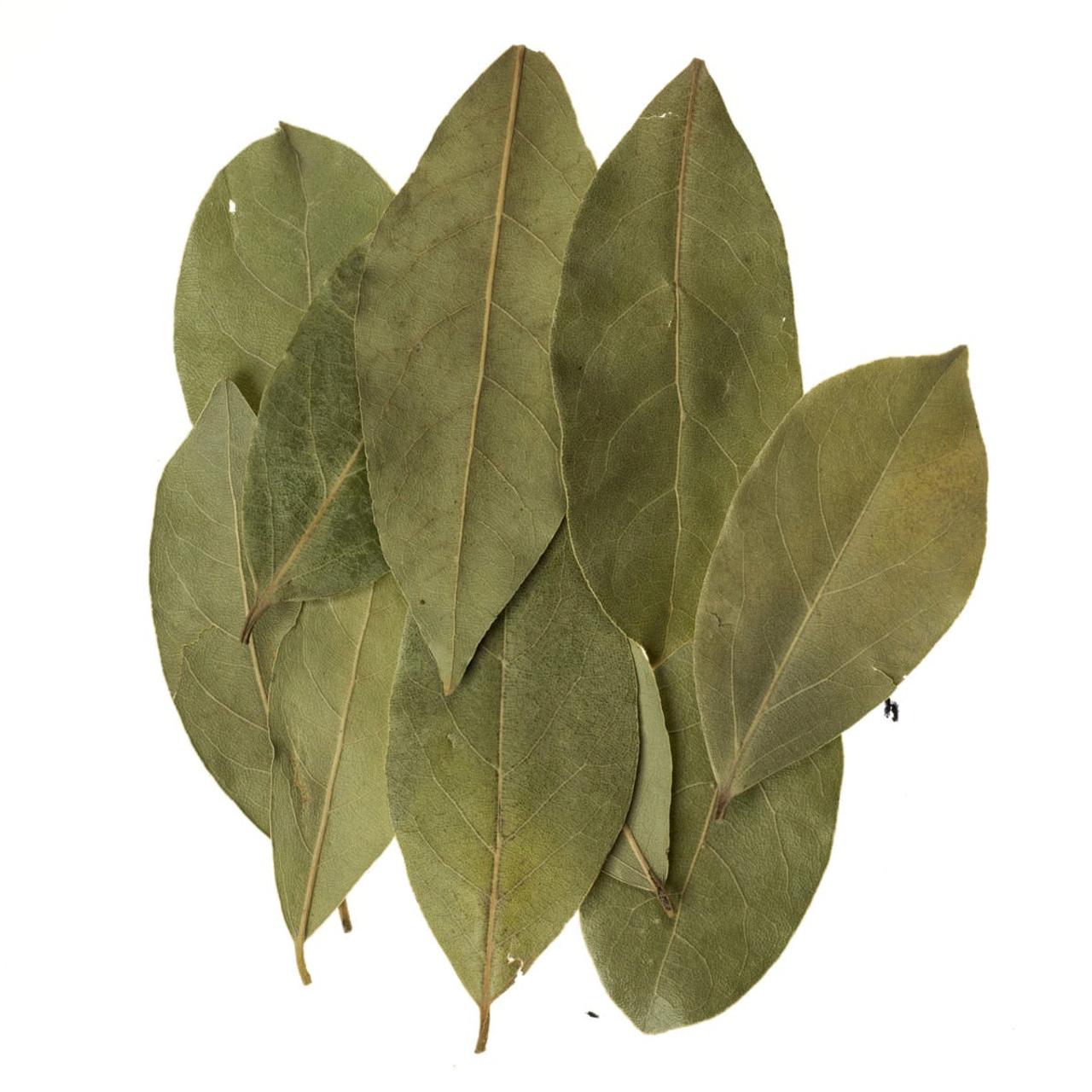
Source: americanspice.com
Harvesting Bay Leaves
Harvesting bay leaves is quite simple and easy to do. Start by selecting large, unblemished bay leaves from the plant. Gently hand-pick or snip off the leaves, taking care not to damage them. Next, line a baking sheet with paper towels and spread out the leaves on top. Alternatively, you can lay out each leaf individually on a piece of mesh screen without overlapping. Allow the leaves to dry completely – store bought dry bay is usually bone dry but freshly dried leaves have a better and deeper flavor. Once dry, store the harvested bay leaves in an airtight container in a cool, dark place for up to one year.
Do Wild Bay Leaf Trees Exist?
Yes, bay leaf trees (Laurus nobilis) do grow wild in many areas. They are native to the Mediterranean region and parts of Asia, but have since been naturalized in many other places, including much of the West Coast of North America. In California and Oregon, bay leaf trees can be found growing along the coast and throughout the Sierra Nevada Mountains. In addition to these natural habitats, bay leaf trees can also be found in many urban areas, as they are oten used for ornamental purposes in parks and gardens.
Does Adding a Bay Leaf Enhance the Flavor of a Dish?
Yes, a bay leaf can make a big difference to the flavor of soups and stews. The leaf itself has a slightly spicy, subtly menthol aroma that adds depth and complexity to the dish. When making your own broth or stock, the leaves can intensify the flavors in a subtle yet unmistakable way. Additionally, ther flavor helps lighten up heavier dishes so that you don’t feel overly full after a big meal. Bottom line: adding bay leaves to your dishes is definitely worth it!
The Purpose of Bay Leaves
Bay leaves are a flavorful and aromatic herb that can be used to add depth of flavor to many dishes. The leaves, which come from the laurel tree, have a unique scent and taste that is both pungent and slightly sweet. Bay leaves have long been prized for their ability to add complexity to dishes without dominating the othr flavors or overpowering them. They are most often used in soups, stews, sauces, and marinades, where they give a subtle hint of minty sweetness with earthy notes of black pepper and pine. When cooked in liquid such as broth or water, their flavor is further released and their aroma fills the kitchen. Bay leaves also help balance out heavy flavors in dishes, as well as providing a slight bitterness that adds an additional layer of flavor.
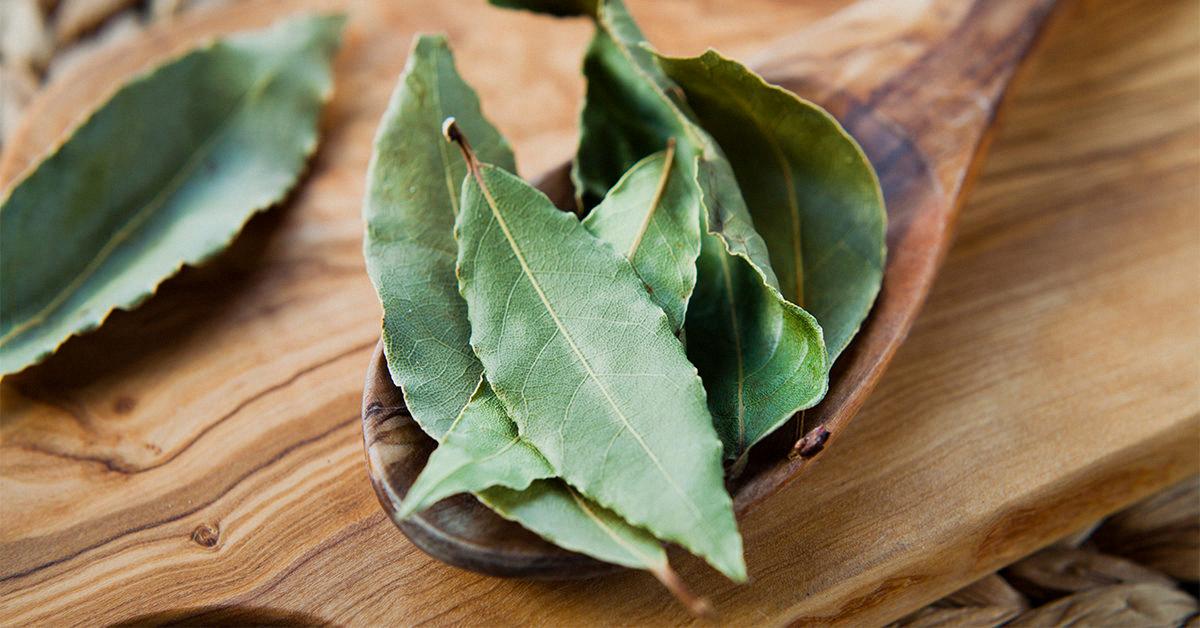
Source: healthline.com
The Benefits of Fresh vs. Dried Bay Leaves
The answer to whether fresh or dried bay leaves are better depends on the dish you’re making. Fresh bay leaves have a more vibrant flavour and aroma than their dried equivalent, but they can be overpowering if used in large quantities. Dried bay leaves are milder and are generally left in a dish as it cooks, but their flavour is less vibrant. Ultimately, it depends on the dish you’re creating and the desired flavour profile.
Potential Side Effects of Consuming Bay Leaves
The most common side effects of taking bay leaves in large amounts are sleepiness, drowsiness, and fatigue. Less common side effects may include stomach discomfort, headaches, or dizziness. It is important to note that bay leaves should not be taen with sedatives as this could cause an excessive level of sleepiness. If you experience any side effects after taking bay leaves, you should consult a doctor immediately.
The Indian Name for Bay Leaf
Indian bay leaf, also knwn as tejpat, tejapatta, Malabar leaf, Indian bark, Indian cassia, or malabathrum, is a fragrant leaf from the Cinnamomum tamala tree native to India, Bangladesh, Nepal, Bhutan and China. It is commonly used in Indian cooking as an aromatic flavoring and is noted for its aroma and taste similar to cinnamon. Tejpat leaves have a slightly bitter flavor that adds depth to curries and other dishes. It can also be used in pickling and marinating meats.
What to Do If You Accidentally Swallow a Bay Leaf
If you swallow a bay leaf, it is important to seek medical attention immediately. The sharp edges of the leaf can cause damage to the digestive tract and may require treatment. Depending on the size of the leaf, it can become lodged in the throat, windpipe or esophagus, leading to furthr complications. Symptoms such as vomiting, abdominal pain, chest pain and difficulty swallowing are signs that you may have swallowed a bay leaf. It is important to call 911 or go to your nearest emergency room for prompt medical care.
Using Bay Leaves for Cooking
For cooking purposes, the most common bay leaf to use is the Turkish (or Mediterranean) variety. These have a more subtle flavor than California bay leaves, which are slightly more potent and have a hint of minty taste. Turkish bay leaves are also longer and wider than California bay leaves, making them easier to remove from dishes when they’re finished cooking. When using either type of bay leaf, it’s best to add them to dishes at the beginning of the cooking process so that their flavors can be extracted over time.
The Benefits of Using Cinnamon and Bay Leaves
Cinnamon and bay leaves are both incredibly beneficial for your health. Cinnamon is a rich source of antioxidants, which helps to cleanse the body of toxins and improve your metabolism and digestion. Additionally, consuming cinnamon has been known to help reduce blood sugar spikes. Bay leaves, on the oher hand, are also rich in antioxidants and have been shown to possess anti-inflammatory properties. They can help reduce symptoms associated with arthritis, as well as ease stomach problems such as indigestion and gas. In addition, bay leaves can be used as a natural diuretic to help flush out harmful toxins from your body. Both cinnamon and bay leaves can be brewed into a tea that offers many health benefits when consumed regularly.
The Effect of Bay Leaves on Fat Burning
Bay leaves have been used as a natural weight loss aid for centuries. They contain active compounds that can help to burn fat, improve digestion, and reduce cravings. Studies have shown that consuming bay leaves can increase thermogenesis in the body, which is the process of burning calories to create heat. Additionally, bay leaves are a good source of calcium and other minerals that can help to speed up metabolism. This helps to increase fat burning potential in the body, which can lead to weight loss over time. Furthermore, bay leaf extract has been found to reduce appetite and cravings by reducing levels of certain hormones in the body. For tese reasons, bay leaves may be beneficial for those trying to lose weight by burning fat.
Is Drinking Bay Leaf Tea Every Day Safe?
Yes, you can drink bay leaf tea every day. Drinking bay leaf tea has many health benefits such as reducing blood pressure, improving blood circulation, and decreasing cholesterol levels. It can also soothe your digestive track and help avoid constipation and other digestive disorders. Furthermore, drinking bay leaf tea twice a day may even help you with weight loss. However, it is important to note that if you are pregnant or nursing, you should consult your doctor before including bay leaf tea in your diet.
Are Raw Bay Leaves Toxic?
No, raw bay leaves are not poisonous. While they can be uncomfortable to eat due to their hard texture, they are not toxic and will not cause any harm if consumed. In fact, bay leaves have been used in cooking for centuries, both fresh and dried. When added to a dish, they give off a subtle flavor that many find pleasant and add an additional layer of flavor to dishes such as soups and stews. Additionally, bay leaves have health benefits as well; they are rich in antioxidants that can help boost your immune system and reduce inflammation.
The Benefits of Bay Leaf for High Blood Pressure
Yes, bay leaf is a good alternative for those looking to lower their blood pressure naturally. It has been used for centuries as an herbal remedy for high blood pressure due to its diuretic properties, whih help the body eliminate excess sodium and water. Additionally, bay leaf contains potassium, which helps balance out sodium levels in the body. Studies have found that consuming a daily dose of bay leaf extract can reduce systolic and diastolic blood pressure readings after just two weeks. However, it is important to consult with your doctor before taking any herbal remedies to ensure they will not interfere with any other medications you may be taking.
Are Bay Leaves Toxic to Dogs?
Yes, bay leaves are considered to be toxic to dogs. Consuming them can cause gastrointestinal issues such as diarrhea and vomiting, and if a dog swallows a whole leaf it could result in an obstruction in their digestive system. The toxicity of bay leaves is due to the presence of eugenol and other essential oils. It is important to keep bay leaves away from your dog at all times and consult a veterinarian if you suspect your pet has ingested any.
Difference Between Bay Leaves and Turkish Bay Leaves
Bay leaves are an aromatic herb commonly used in cooking. There are two main varieties of bay leaves: California bay leaves, which tend to be longer and thinner with a more potent and slightly minty flavor, and Turkish or Mediterranean bay leaves, which have shorter and fatter leaves with a more subtle flavor. California bay leaves have a stronger flavor that is best suited for dishes that require a longer cooking time, whie Turkish bay leaves are milder in flavor and are better for quick-cooking dishes. The potency of the flavor varies between the two types of bay leaves, so it’s important to choose the right one for your recipe.
Drying Bay Leaves at Home
Drying bay leaves at home is an easy process. Begin by arranging the bay leaves in a single layer on a baking sheet and covering with a paper towel. Then, place the tray in a dark and dry area out of direct sunlight, with plenty of ventilation. Allow the bay leaves to dry for two weeks, flipping them after the firt week to ensure they dry evenly. Once finished, remove from the tray and store in an airtight container for up to six months.
Rooting Bay Leaf Cuttings in Water
Rooting bay leaf cuttings in water is possible, but it is not usually recommended as a successful propagation technique. Water rooting generally produces weaker plants with fewer roots than propagating in soil. In order to attempt to root bay leaf cuttings in water, you will need to first strip off all leaves from the cutting except the top two or three. Then plunge the cut end of each cutting into a bucket of water. Change the water every couple days, and keep it at room temperature. The key is to ensure that there is aways enough fresh oxygenated water for the cuttings to take up. You may see some root growth within 1-2 weeks, but it is important to remember that these will likely be much weaker than if propagated in soil.
Do Bay Trees Produce Fruit?
Yes, bay trees do bear fruit. In autumn, the bay tree produces glossy black oval fruit that are sometimes referred to as berries. These fruits are edible and can be used in a variety of dishes, such as soups and stews. The fruits have a slightly bitter flavor, but can be sweetened if desired.
Lifespan of a Bay Tree
Bay trees are a long-lived herb, with a lifespan of up to 50 years in open ground. In containers, they can last for 20 years or more when cared for properly. This makes them an excellent choice if you’re looking for an evergreen plant that will stand the test of time. The glossy green leaves of bay trees are also used in many recipes, making them a great addition to any kitchen garden.
Growing Bay Leaves Indoors
Yes, you can certainly grow bay laurel (Laurus nobilis) indoors. It is a broadleaf evergreen tree native to the Mediterranean region that is hardy between USDA Hardiness Zones 8-10. To ensure success, you should select a spot with bright sunlight and relatively cool temperatures throughot the winter. If you find a quality nursery that carries bay laurel, you will be able to purchase the tree and plant it in your home. Happy growing!
Can Bay Trees Be Grown in Pots?
Yes, bay trees can be grown in pots. However, it is important to provide the right environment for them to thrive. Pots shuld be large enough to accommodate the mature size of the tree (at least 40cm/16″ in diameter and 30cm/12″ deep). The pot should also have good drainage. A soil-based compost mixed with some sharp sand or horticultural grit is ideal for potted bay trees. It’s important to water regularly but take care not to overwater as this can lead to root rot. Positioning pots in a sheltered spot away from strong winds and direct sunlight will also help keep your bay tree healthy, and mulching with organic matter is beneficial too.
Do Bay Leaves Actually Do Anything?
Conclusion
Bay leaves are an incredibly versatile herb that has been used in cooking for centuries. They have a mild, slightly bitter flavor and can be used to add depth and complexity to dishes both savory and sweet. Bay leaves are a popular ingredient in cuisines around the world, including French, Italian, Indian, Mexican and more. They can be used whoe or ground into a powder for use as a spice. Bay leaves also have medicinal properties and have been used for centuries to treat colds, indigestion, inflammation, and other ailments. The oils found in bay leaves are thought to have antiseptic properties that can help prevent infections. All in all, bay leaves are a great addition to any kitchen pantry due to their versatility in both culinary and medicinal applications.

